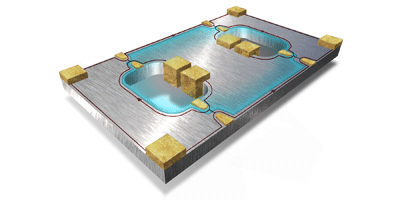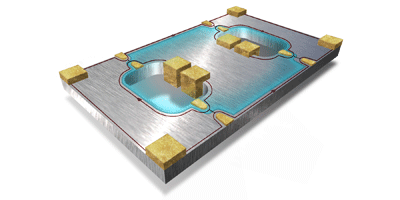An Anyon Detector
In three dimensions, quantum particles are neatly classified as either bosons or fermions, but several decades ago, theorists predicted that another class of particles, called anyons, could exist in the special conditions of the two-dimensional world. The strongest contenders for anyon status are the fractional quantum-Hall electronic states that form when a two-dimensional sheet of electrons is pierced by a strong magnetic field, but experiments that have tried to prove this are still open to interpretation. In Physical Review Letters, Gabriele Campagnano, at the Weizmann Institute of Science in Israel, and colleagues propose a test experiment for anyons.
What distinguishes anyons from bosons and fermions is their quantum statistics: The wave function describing multiple bosons or fermions acquires a factor of or , respectively, if two particles are exchanged, but for anyons, the factor lies between and .
To see these unique exchange effects, Campagnano et al. conceptualize a variation on the Hanbury Brown and Twiss (HBT) interferometer, in which two detectors record the arrival of particles sent from two uncorrelated sources. Like other quantum interferometry measurements, HBT is sensitive to all possible paths the two particles can take to the detectors, including ones where they swap (exchange) places. Campagnano et al. imagine a setup with sources and detectors appropriately arranged in a fractional quantum Hall device and tabulate all possible outcomes at the detectors, showing that the detector correlations could be used to identify anyon states.
The device could potentially be adapted to search for non-Abelian anyons, a type of anyon that would be particularly suitable for quantum computing. – Jessica Thomas





